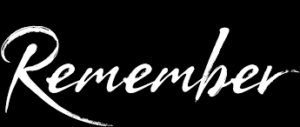Deja Vu: “occurs when we encounter something new, but it feels as if we’ve seen it before,” (Adam Grant, Originals, p. 7)
Vuja De: “is the reverse–we face something familiar, but we see it with a fresh perspective that enables us to gain new insights into old problems,” (Adam Grant, Originals, p. 7)
“We shall not cease from exploration. And the end of all our exploring. Will be to arrive where we started. And know the place for the first time.”
T.S. Eliot
The best mental maps and models support CULTIVATING and PRACTICING the act of Vuja De because of their efficiency and efficacy in providing the mind with guide posts to “interpret the world and understand the relationships between things.”
The more you can see the familiar in unfamiliar ways, the more you can unlock barrierlessness. Or, what Daniel Pink refers to as Symphony:
Vuja De and the outcome of barrierlessness make learning that much more efficient and memorable because information gets more easily categorized and chunked inside of pre-existing mental models.
The mental model that I refer back to on this blog and anchor my work in the most pertains to the interconnected relationships between the three foundational mental skills: self-awareness, self-regulation, and self-reflection.
This mental model evoked Vuja De for me when I learned about Shinzen Young‘s three foundational mindfulness skills: sensory clarity, capacity to direct attention, and acceptance/equanimity.
- Sensory Clarity is a comparable skillset to Self-Awareness
- Capacity to Direct Attention is a comparable skillset to Self-Regulation
- Acceptance/Equanimity is a comparable skillset to Self-Reflection.
Sensory clarity allows for greater INSIGHT about one’s experience. A higher resolution of sensory clarity will equate to a more robust ability to take inventory of how you are likely to behave and the sense data that influences your tendencies of behavior.
Self-Regulation is dependent on your capability to detach from certain focal points, mannerisms, and/or states of consciousness in order to direct your attention to different focal points, mannerisms, and/or states of consciousness that better support your situation, intended outcome, and the interplay between the two.
Acceptance/Equanimity is a state of consciousness in which you are above the line. When you are in this state, you are most capable of effectively making meaning out of what has occurred by assessing, evaluating, interpreting, and organizing your thoughts and feelings about an experience in an integrative way. The act of reflecting often helps to influence increased equanimity as well, especially if you can reflect in a more comprehensive way.
The foundational mental skills are simple and comprehensive enough that their application and diversity of iteration is widespread. Therefore, the more internalized they are, the more your brain will be EQUIPPED to map them on top of or alongside similar mental models of simplicity, comprehensiveness, and intentionality.




